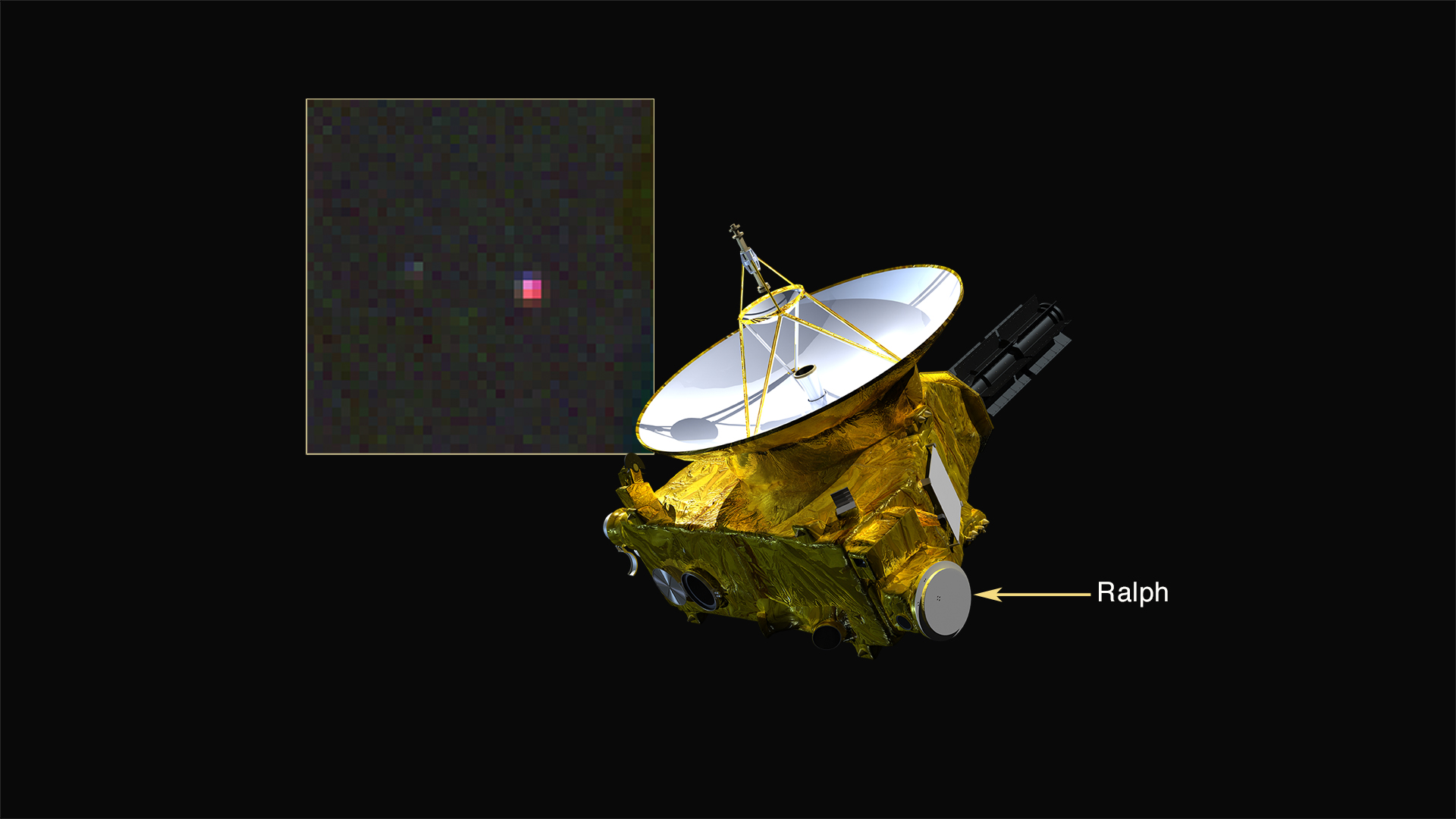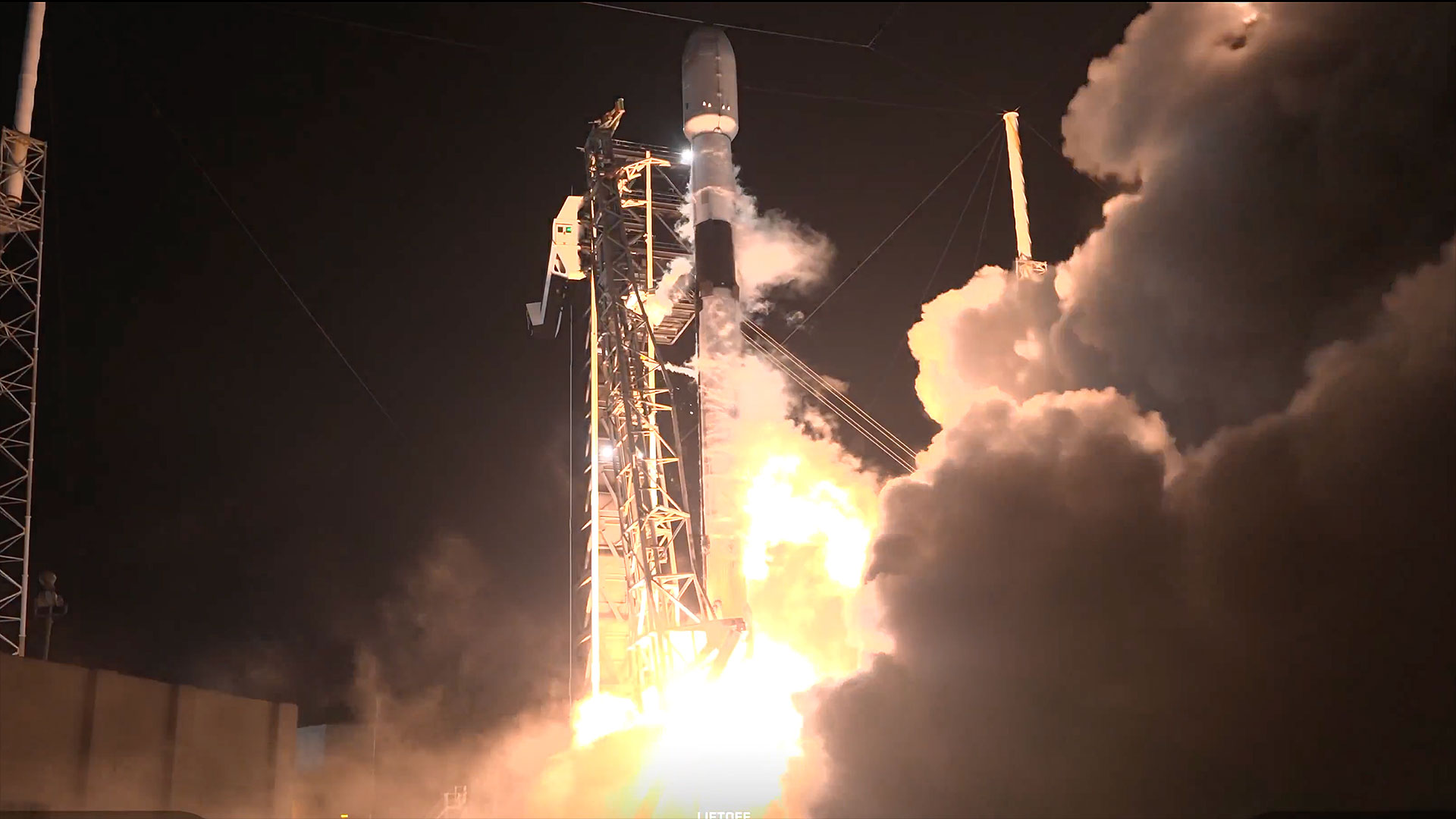
New Horizons Spots Methane Ice on Pluto

With less than two weeks until its historic close encounter with Pluto, NASA's New Horizons probe has detected methane ice on the surface of the dwarf planet.
Methane was first discovered on Pluto in 1976, so the find by New Horizons is not surprising. But the probe's ability to see methane and other chemicals on the planet's surface demonstrates that the distance is closing between these two bodies. New Horizons will be the first probe to make a close flyby of Pluto, on July 14.
With the announcement of the methane detection, the mission team also released a series of new images of Pluto and its largest moon, Charon, which are steadily coming into focus as the probe nears its target.
Methane can be found underground and in the atmosphere on Earth, and is the product of both organic and inorganic processes.
The source of methane on Pluto is currently unknown: it could be primordial, having come from the chemical soup that eventually formed the solar system 4.5 billion years ago.
"Soon we will know if there are differences in the presence of methane ice from one part of Pluto to another," Will Grundy, the composition team leader for New Horizons, said in a statement.
A few hours after New Horizons makes its closest pass by Pluto, the spacecraft's instruments will have the opportunity to observe sunlight moving through the dwarf planet's atmosphere.
Breaking space news, the latest updates on rocket launches, skywatching events and more!
"It will be as if Pluto were illuminated from behind by a trillion-watt light bulb," said Randy Gladstone, a New Horizons scientist from the Southwest Research Institute in San Antonio, Texas.
This light will help the probe's instruments determine the composition of Pluto's atmosphere.
New Horizons left Earth in January 2006 to make the journey of more than 9 billion miles to the Pluto system. Traveling at more than 30,000 miles per hour, the space probe is rapidly closing in on the dwarf planet and its five known moons (and searching for new moons is one of the mission goals).
Follow Calla Cofield @callacofield. Follow us @Spacedotcom, Facebook and Google+. Original article on Space.com.
Join our Space Forums to keep talking space on the latest missions, night sky and more! And if you have a news tip, correction or comment, let us know at: community@space.com.

Calla Cofield joined Space.com's crew in October 2014. She enjoys writing about black holes, exploding stars, ripples in space-time, science in comic books, and all the mysteries of the cosmos. Prior to joining Space.com Calla worked as a freelance writer, with her work appearing in APS News, Symmetry magazine, Scientific American, Nature News, Physics World, and others. From 2010 to 2014 she was a producer for The Physics Central Podcast. Previously, Calla worked at the American Museum of Natural History in New York City (hands down the best office building ever) and SLAC National Accelerator Laboratory in California. Calla studied physics at the University of Massachusetts, Amherst and is originally from Sandy, Utah. In 2018, Calla left Space.com to join NASA's Jet Propulsion Laboratory media team where she oversees astronomy, physics, exoplanets and the Cold Atom Lab mission. She has been underground at three of the largest particle accelerators in the world and would really like to know what the heck dark matter is. Contact Calla via: E-Mail – Twitter
